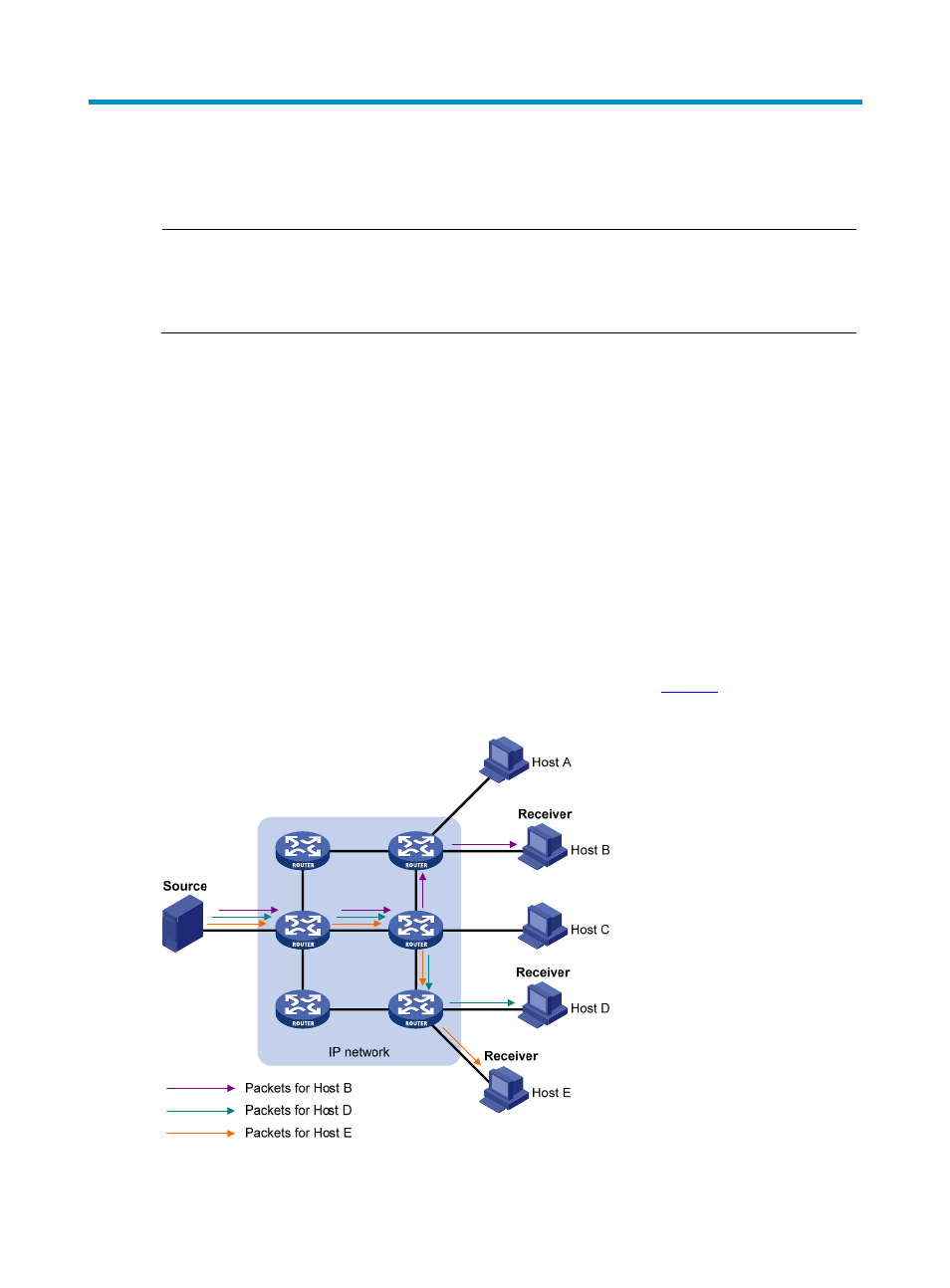Multicast overview, Introduction to multicast, Comparison of information transmission techniques – H3C Technologies H3C SecPath F1000-E User Manual
Page 2: Unicast

1
Multicast Overview
NOTE:
•
This document chiefly focuses on the IP multicast technology and device operations. Unless otherwise
stated, the term
multicast in this document refers to IP multicast.
•
The term
router in this document refers to network routing devices running a routing protocol.
Introduction to Multicast
As a technique coexisting with unicast and broadcast, the multicast technique effectively addresses the
issue of point-to-multipoint data transmission. By allowing high-efficiency point-to-multipoint data
transmission over a network, multicast greatly saves network bandwidth and reduces network load.
With the multicast technology, a network operator can easily provide new value-added services, such as
live webcasting, Internet TV, distance learning, telemedicine, Internet radio, real-time videoconferencing,
and other bandwidth- and time-critical information services.
Comparison of Information Transmission Techniques
Unicast
In unicast, the information source (Source in the figure) needs to send a separate copy of information to
each host (Receiver in the figure) that wants the information, as shown in
.
Figure 1 Unicast transmission
